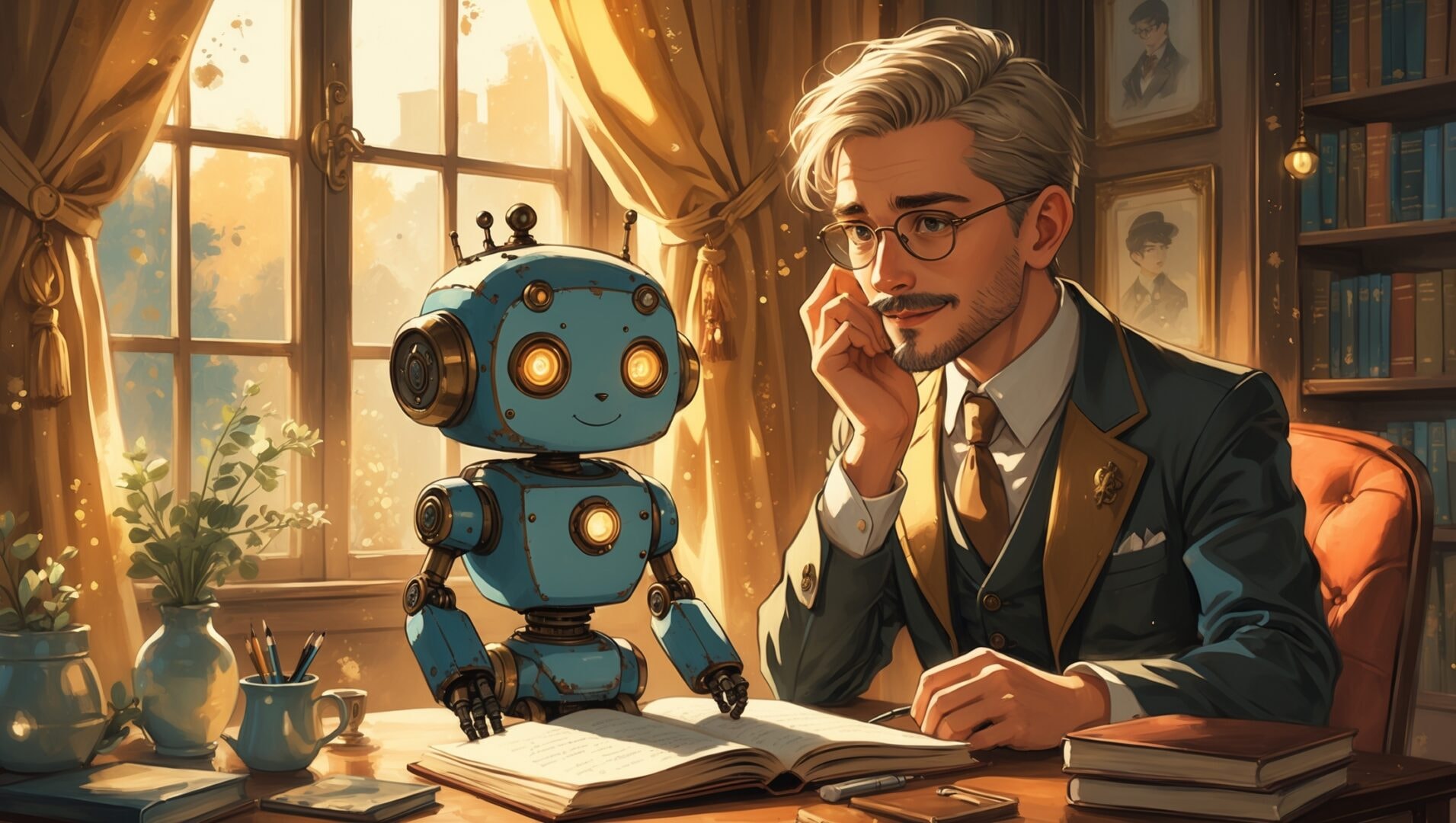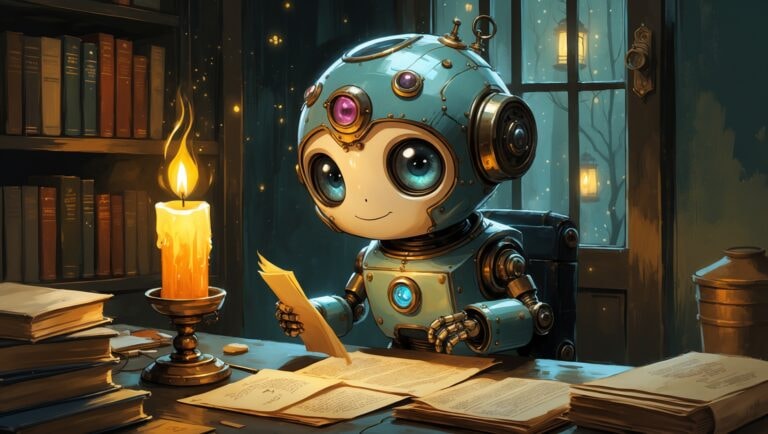
How To Use AI To Write A Book
2.2 million books are published each year, according to UNESCO estimates. That’s over two million voices, ideas, and stories entering the world annually — yet so many others never leave the minds of their creators. Why? Because writing a book is hard. It takes time, structure, creativity, and persistence.
But in 2025, the rules (and tips) have changed.
AI writing tools are far from futuristic news. They’re practical, powerful, and creative partners.
Then, how to use AI to assist in writing a book from start to finish? It is not only possible, it is actually fun.
How To Use AI To Write A Book: Techniques & Benefits
What do you feel when you’re tackling every scene, plot twist, and character arc on your own? You feel alone, stuck, or overwhelmed, don’t you? That’s why most people quit writing (not because they’re bad at it). AI can’t make you a genius, but it can get you to the finish line. Here’s how it solves the exact problems that kill most books:
- Staring at the blinking cursor for an hour?
Throw your topic at the AI and ask it to spit out a rough draft. Even if you hate it, it breaks the ice. A terrible first draft is still a draft.
- Can’t decide what happens next?
Can AI help with writing and answering, “What’s the most unexpected twist that could happen here?” You’ll get ten. Nine might be trash. One might be gold. That’s a win.
- Does the dialogue sound like a robot generated it?
Ironically, AI can fix that. Feed it a sample and ask it to make it more casual, more emotional, more sarcastic. Pick what fits. Learn what clicks.
- Your plot’s sagging in the middle?
Who can help me write a book plot? AI can outline pacing that works. It’ll tell you what beats are missing and suggest tension-building scenes. You can ignore it, but it gets you thinking.
- Hate editing your own stuff?
Ask AI to rewrite a paragraph three, five, or ten different ways. Compare them to your version. You’ll start to see your blind spots.
- Think your idea’s already been done?
Spoiler: It has. But AI can help you remix it. Combine genres, add twists, change formats. A murder mystery told backward? A memoir in the style of tweets? Let it spark weirdness.
You don’t need permission to be a writer. You need systems that keep you writing. AI for authors is that system: always on, never tired, and zero judgment when you change your mind for the 30th time.
5 Steps to Writing Books with AI
Writing a book with AI doesn’t mean pressing a button and walking away. It means collaborating with a machine that doesn’t get tired, bored, or stuck in its own head. Here’s the simple, no-fluff, 5-step process to get your book out of your head and onto the page.
Step 1: Get Clear on Your Core Idea or Logline
Before you ask AI to write anything, you need to know what you’re trying to say. Not the whole plot. Just the heart of it. Ask yourself: What’s the point of this book? What’s the big idea, the story that won’t leave you alone, the message you want people to remember?
Use AI to help you:
Prompt: “Summarize my idea in one powerful sentence: A detective who solves crimes using people’s dreams.”
Step 2: Build a Working Outline
How do I write a book with no structure? No way. AI can help you structure the journey so you’re not writing in circles.
Prompt: “Create a 10-chapter outline for a psychological thriller based on this summary…”
Take what works. Change what doesn’t. You’re the author. AI is the assistant.
Step 3: Co-Write Scenes and Chapters
Now the real writing begins. Start small. Pick a scene. Let AI help you draft the messy first version. Don’t worry about perfection. Focus on momentum.
Prompt: “Write a scene where the main character finds out their brother is alive—but working for the enemy.” Then, rewrite it in your voice. Add emotion. Cut the fluff. Keep the spark.
Step 4: Edit Like a Machine With a Machine
First drafts are ugly. That’s the point. Use AI that writes books to tighten your prose, cut filler, and spot dead dialogue.
Prompt: “Make this paragraph more tense. Cut 20% of the words. Keep my tone.” This is where your voice sharpens. You start learning how to say more with less. You start sounding like you.
Step 5: Finish the Damn Book
The biggest killer of books isn’t talent. It’s quitting. So, it’s your chance to use AI for creative writing when motivation dies. Use it to summarize, rewrite, brainstorm, cheer you on—whatever keeps the train moving.
Prompt: “Give me a motivational speech to finish/continue my book.”
If you can do this for five days, you’re no longer “thinking about writing a book.”
You’re writing one.
Talefy – Your AI Companion for Writing Books
Just wanted to test out this AI platform you’d heard about—Talefy? What is it? Interactive stories? Cinematic illustrations? A writing tool that allows you “play” your book?
Once the “Create Story” button is clicked, the best story-writing AI begins to work.
The genre chosen: dark fantasy (you can choose something else).
A character was created with a tragic backstory, a path was selected, and within moments, Talefy’s AI began crafting scenes that felt as if they had been outlined for months only they were better.

Writing became a play-through.
Every decision shapes the overall direction of the story. Every scene was brought to life with lifelike visuals, almost like scenes from a movie. Every plot twist felt personal, yet elevated by an AI that understood what made stories truly compelling.
- This is what was achieved:
- A complete interactive story arc
- Dozens of stunning visuals
- A custom world that seemed impossible to create
- And a new perspective on the art of writing
What else can you get with Talefy, the best AI for writing a book?
- Talefy doesn’t generate a text, like other tools. What it does is shape stories in real time. You don’t just write your book. You play it. Every choice you make transforms the story.
- Talefy gives you full control over your story’s tone, structure, and direction without needing to know anything about code, design, or publishing.
- Talefy turns it into a shared experience. Publish your story, play others’ stories, get inspired by community-made narratives, and see how different choices create entirely different books.
- You can test your character and try to speak with it by the “Create character” feature.
The AI adapts: no lag, no limits, pure creativity. Feel the power of Talefy to create a story that only you can tell.
Best Practices for Writing a Book with AI
The best results come when human imagination connects with machine precision. Here’s how to get the most out of using AI to write a book (even a bestseller):
Use AI for What It Does Best
Stuck on a scene? Use AI to brainstorm dialogue, fill in a description, or spin a subplot. Think of it as your always-on co-writer for the parts that feel stuck or flat. Let it help with momentum, but always add your final polish.
Don’t Be Afraid to Say “No”
AI suggestions are just that – suggestions. If a line doesn’t hit or a twist feels off, cut it. The goal is still a great book, not a perfect prompt. Keep the parts that spark something real, and ditch the rest.
Think Iteratively
AI writing isn’t a one-and-done process. It’s more like sculpting than painting—refining over time. Generate multiple versions of a chapter. Compare outcomes. Merge the best parts. Writing with AI is faster, but it still respects the rhythm of revision.
Train the AI with Your Style
Can AI help me write a book as I want? Upload a sample of your writing (if the platform allows) or simply keep guiding the tone as you go. The more consistently you edit or tweak the AI’s output, the faster it will adapt to your voice. This is how your work stops sounding “AI-generated” and starts sounding like you.
Can You Publish a Book Written by AI?
Short answer: Yes. With transparency and responsibility. If significant parts of your book were created by AI, consider adding a note in the preface or acknowledgments. AI might help generate content, but you curate, edit, and shape the final result. That’s authorship.
Reputable platforms like Talefy use generative models trained on vast datasets, but you should always scan your content for originality and avoid directly copying passages from copyrighted works (even unintentionally).
Don’t use AI to mimic real authors or recreate copyrighted characters without permission. Use it to amplify your originality, not clone someone else’s.
Tools and Software to Enhance Your AI Writing Process
So, which AI to choose? The answer used to be a long grind of drafts and rewrites. But now, with AI in your toolkit, that question has a much more exciting answer: you write smarter, faster, and more creatively.
1. Talefy – AI Story Generator
Best for: Interactive fiction, immersive storytelling, and visual-rich narratives.
You create a character and pick a genre, and Talefy’s dynamic AI spins up custom storylines that adapt to your choices. If you’re stuck on “How can I write a book that actually feels fun?”, this is your answer.
2. Sudowrite
Best for: Expanding prose, creative brainstorming, rewriting scenes.
Built specifically for writers, Sudowrite helps you fill in descriptive gaps, generate metaphors, or rewrite sentences with more flair. It’s ideal for anyone who wants to improve sentence-level craft without losing their own style.
3. Scrivener + ChatGPT Integration
Best for: Organization, planning, and long-form structure.
Scrivener is still king when it comes to managing a big manuscript. Add an AI like ChatGPT to your workflow, and suddenly, outlining, summarizing, or even rewriting chapters becomes ten times faster. So, how long to write a book? We don’t know. ChatGPT does. This combo saves you month
4. Grammarly + ProWritingAid
Best for: Polishing your final draft.
These tools help you clean up grammar, refine tone, and spot inconsistencies, which is especially important if you’re collaborating with an AI that sometimes throws in odd phrasing.
Conclusion: The Future of AI in Writing
So, does artificial intelligence help with writing? Absolutely. It speeds up the creative process, breaks writer’s block, and enhances storytelling in ways that weren’t possible just a few years ago. But the best books still come from writers who use these tools with intention.



